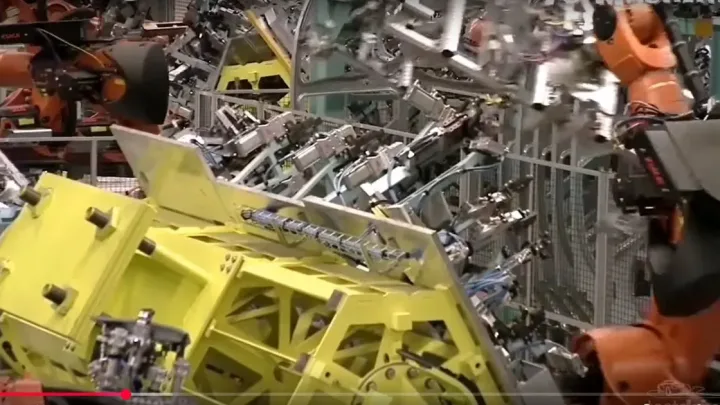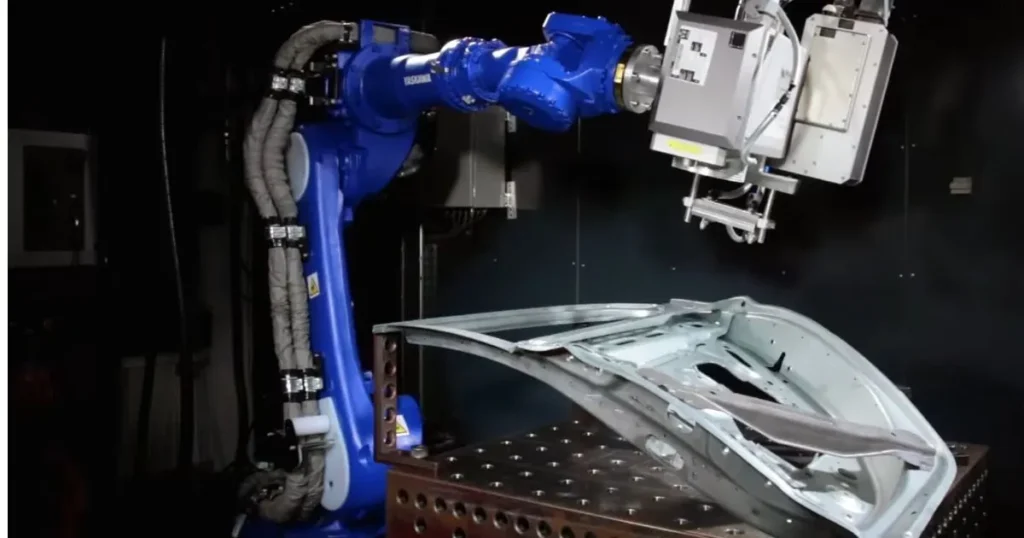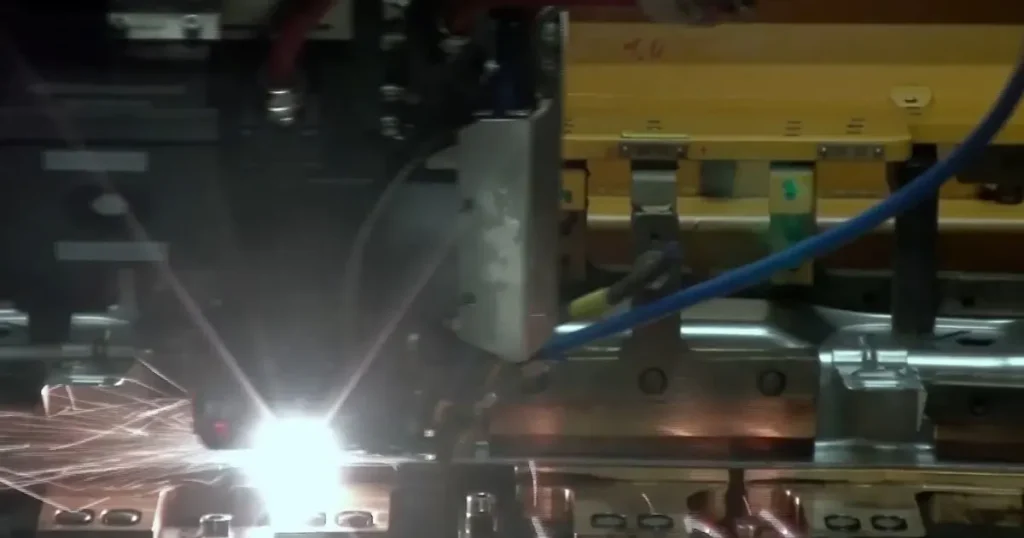
Yes, Welded assembly connections are considered fixed due to their permanent nature. They securely join two materials into a single unit.
Understanding First you need to knowing the significance of Welded assembly connections in various industries is crucial. These connections are pivotal in construction, automotive manufacturing, and aerospace engineering, among others. They offer unparalleled strength and durability, making them a preferred choice for permanent joints. Welding technology has evolved, allowing for more precise and reliable connections.
This advancement ensures that structures and products can withstand extreme conditions without failing. The process involves using heat to melt and fuse materials together, creating a bond that is often stronger than the materials themselves.
This method of joining metals has revolutionized how we build and manufacture, providing solutions that are both efficient and long-lasting. Welded assembly connections play a vital role in the integrity and safety of countless projects worldwide.
The Essence Of Welded assembly Connections
Welded connections are vital in construction and manufacturing. They join materials to form a single entity. This strength and permanence define their essence. Welding creates bonds that can endure stress and harsh conditions.
Characteristics Of Welding Joints
- Strength: Welding joints provide strong connections between metal parts, designed to withstand loads and stress.
- Durability: High-quality weld joints ensure long-lasting performance without premature failure.
- Flexibility: Different joint types allow for a wide range of applications and accommodate various shapes and thicknesses.
- Fusion: Welding joints involve the melting and bonding of base metals, creating a continuous and uniform structure.
- Load Distribution: Joints are designed to evenly distribute loads across the weld area for improved stability.
- Accessibility: Different joint configurations offer varying levels of accessibility for welding operations, affecting ease of execution.
- Aesthetic Finish: The appearance of welding joints can impact the visual quality and surface finish of the final product.
Comparing Welded And Bolted Connections
| Aspect | Welded Connections | Bolted Connections |
|---|---|---|
| Strength | Generally stronger, forming a continuous joint | Relatively strong but dependent on bolt size and quality |
| Ease of Installation | Requires skilled labor and special equipment | Easier to install with standard tools |
| Cost | Higher labor and equipment costs | Lower installation costs |
| Flexibility | Permanent and not easily modified | Can be disassembled and reassembled |
| Inspection | Difficult to inspect after installation | Easy to inspect and replace if needed |
| Time | Takes longer due to precise preparation | Faster assembly with standardized parts |
| Applications | Suitable for high-strength, rigid structures | Ideal for temporary or adjustable structures |
Welded assembly joints offer unmatched strength but require skilled labor. Bolted joints provide versatility and ease of assembly.

Exploring The Fixed Nature Of Welds
Welding stands as a cornerstone in engineering, creating robust structures. The fixed nature of welds offers unmatched permanence. This in-depth look sheds light on why welded connections are non-negotiable in structural integrity.
Defining Fixed Welded assembly Connections In Engineering
In engineering, fixed connections are pivotal. They ensure structural components remain united under stress. These connections are designed to resist forces without movement. Welds exemplify such connections, providing steadfastness where it's crucial.
How Welding Creates A Permanent Bond
Welding uses intense heat to join metals. This process melts the base materials. A filler material then fuses these parts, creating a permanent bond. Once cooled, the joint becomes as strong as the base metal, often stronger.
Let's break down the process:
Once completed, the welded connection is fixed. It cannot be undone without cutting or grinding. Welds seamlessly integrate into engineering designs, offering a reliable, enduring solution to structural challenges.
Types Of Welded assembly Connections
Welded assembly connections are vital in many structures. They join metal parts permanently. This section explores different welded connections.
Common Welding Techniques
Several welding methods exist. Each has unique benefits. They suit different project needs.
- Shielded Metal Arc Welding (SMAW) - Also known as stick welding. It's versatile and straightforward.
- Gas Metal Arc Welding (GMAW/MIG) - Uses a wire feeding gun. It's fast and efficient.
- Gas Tungsten Arc Welding (GTAW/TIG) - Offers high precision. Ideal for thin materials.
- Flux-Cored Arc Welding (FCAW) - Similar to MIG. Includes a flux-cored wire. Good for thick materials.
- Submerged Arc Welding (SAW) - Uses a granular flux. Creates high-quality welds.
Assessing The Strength Of Different Welds
Weld strength is crucial. It determines the durability of the connection. Various factors affect weld strength.
| Welding Technique | Material Thickness | Joint Type | Strength |
|---|---|---|---|
| SMAW | Medium to Thick | Fillet, Butt | High |
| GMAW/MIG | Thin to Medium | Fillet, Butt | Medium to High |
| GTAW/TIG | Thin | Fillet, Butt | Very High |
| FCAW | Thick | Fillet, Butt | High |
| SAW | Thick | Butt | Very High |
Welded assembly Materials And Their Impact On Fixedness
Welding Materials and Their Impact on Fixedness play a crucial role in the success of welded connections. Choosing the right material ensures the joint remains fixed and strong. Let’s dive into the metals used and how properties affect weld integrity.
Metals Commonly Used In Welding
- Steel: Most widely used due to its strength and versatility; includes carbon steel, stainless steel.
- Aluminum: Lightweight, corrosion-resistant, popular in automotive and aerospace welding.
- Copper: Conducts heat well, often used in electrical welding applications.
- Titanium: Strong and corrosion-resistant, ideal for high-stress, high-heat environments.
- Nickel Alloys: Durable and heat-resistant, used in chemical and aerospace industries.
- Magnesium: Lightweight, used in automotive and aerospace but requires special care due to flammability.
Influence Of Material Properties On Weld Integrity
Material properties determine the quality of a weld. Key aspects include:
| Property | Impact on Weld |
|---|---|
| Melting Point | Higher melting points require more heat. |
| Thermal Conductivity | Affects heat distribution during welding. |
| Expansion Coefficient | Influences stress and distortion. |
| Ductility | Impacts toughness and crack resistance. |
Understanding these properties helps create fixed, reliable joints. A good match in materials can prevent failures. The right choices lead to long-lasting connections.

Analyzing Forces On Welded assembly Connections
Welded assembly connections are pivotal in structures. They must withstand forces. Understanding these forces is crucial. It ensures the integrity of welded structures. Let's dive into the specifics.
Stress Factors Affecting Welded assembly Joints
Welds encounter various stresses. These affect their performance. We will explore key stress factors.
- Shear stress: Sliding force parallel to the weld.
- Tensile stress: Pulling force along the weld's length.
- Compressive stress: Pushing force compressing the weld.
- Torsional stress: Twisting force around the weld's axis.
Load-bearing Capacity Of Welds
The load-bearing capacity is vital. It defines a weld's limit. Below is a table showing factors influencing this capacity.
| Factor | Influence on Load Capacity |
|---|---|
| Weld Size | Larger welds can bear more load. |
| Material Quality | Higher grade materials perform better. |
| Weld Type | Some types distribute load more evenly. |
| Joint Design | Design affects how forces are shared. |
Each factor plays a role. They ensure the weld stays strong. Proper design and execution are key.
Testing And Certification Of Welded assembly Connections
Testing and Certification of Welded assembly Connections are crucial steps in ensuring the safety and integrity of structures. These processes confirm that welded joints meet specific standards and can withstand the forces they will encounter in use.
Standards For Welded assembly Quality
Quality standards for welding are vital. They ensure Welded assembly structures are safe and durable. Various international and national bodies set these standards. Welders must follow them strictly.
- ISO and ASTM are two major organizations that provide welding standards.
- Standards cover a range of factors, including materials, processes, and worker qualifications.
- Compliance with these standards is often mandatory for construction projects.
Methods Of Testing Weld Strength
Testing weld strength is essential. It ensures connections can handle the load. There are several methods to test this strength.
| Test Type | Description |
|---|---|
| Visual Inspection | Checks for surface defects. Uses the naked eye or magnification tools. |
| Non-Destructive Testing (NDT) | Uses ultrasonic, radiographic, or magnetic methods. Finds hidden flaws without harming the weld. |
| Destructive Testing | Includes tensile and bend tests. Destroys a sample to check its strength. |
Each method provides valuable information. Engineers use these results to certify welds.

Maintenance And Longevity Of Welded assembly Joints
The maintenance and longevity of welded joints are crucial. These aspects ensure structures stay strong and safe over time. Proper care prevents early failure and extends their life. This section discusses how to keep Welded assembly connections in top shape.
Routine Welded assembly Inspections And Maintenance
Regular checks are key to spotting issues early. They help avoid big problems later. A well-planned maintenance schedule includes:
- Visual inspections: Look for cracks or rust.
- Surface cleaning: Remove dirt and debris to see better.
- Testing: Use methods like ultrasonic to find hidden flaws.
Experts recommend checking critical welds at least once a year.
Factors Contributing To Weld Deterioration
Several things can make welds break down faster. Understanding these can help you protect them. Key factors include:
| Factor | Impact |
|---|---|
| Moisture | Leads to rust and corrosion. |
| Chemicals | Can weaken the metal. |
| Stress | Heavy loads cause cracks. |
| Temperature changes | Expansion and contraction may create gaps. |
Protect welds from these factors to ensure their longevity.
Case Studies Welded assembly: When Welds Fail
Welded assembly connections are strong but not unbreakable. Under certain conditions, welds can fail. Let's explore some real-world cases where weld failures have led to significant consequences, and what we can learn from them.
Historical Welding Failures And Lessons Learned
Welding failures have shaped engineering history. Each case provides valuable insights. These failures remind us of the importance of meticulous welding practices.
- Liberty Ships - During World War II, many of these ships split apart. Poor welding was to blame. The cold cracked the welds.
- Silver Bridge Collapse - In 1967, this bridge fell into the Ohio River. A failed weld led to a broken eyebar, causing disaster.
From these events, engineers learned to improve weld quality. They now prioritize regular inspections and safety protocols.
Improving Safety Through Failure Analysis
Studying weld failures helps prevent future accidents. Failure analysis is a critical tool. It identifies weaknesses in Welded assembly structures.
- Analyze the broken weld.
- Identify the cause of failure.
- Apply these findings to enhance welding techniques.
By understanding past mistakes, we strengthen future welds. This approach has led to safer structures and reliable connections.
| Year | Event | Lesson |
|---|---|---|
| 1940s | Liberty Ships Failure | Need for better materials at low temperatures |
| 1967 | Silver Bridge Collapse | Importance of thorough inspections |
These cases show the importance of quality control in welding. They teach us to always strive for improvement.

Advancements In Welding Technology
Advancements in welding technology revolutionize how we join materials. Strong, reliable connections are crucial in construction, manufacturing, and beyond. As we explore the cutting edge of welding, we find equipment and methods that enhance precision and strength.
Innovations In Welding Equipment
Today's welding landscape features remarkable tools. These tools improve user safety and weld quality. They also reduce the time required to complete jobs.
- Multi-Process Welders: Compact units handle various welding tasks.
- Robotic Welding Arms: They deliver consistent, high-speed welding.
- Smart Helmets: They provide enhanced vision and protection.
These innovations allow for versatility and efficiency. They also ensure that Welded assembly connections remain fixed and durable.
Emerging Techniques And Materials
New welding techniques and materials redefine the limits of metal joining. They result in stronger, longer-lasting connections.
- Friction Stir Welding: Joins tough metals like aluminum and steel.
- Laser Welding: Offers high precision for delicate components.
- 3D Printing Metals: Allows for complex shapes and structures.
These emerging methods expand the possibilities of design and functionality. They also ensure that Welded assembly structures can withstand extreme conditions.
| Aspect | Traditional Welding | Advanced Welding |
|---|---|---|
| Speed | Slower | Faster |
| Precision | Standard | High |
| Materials | Limited | Diverse |
In here, advancements in welding technology ensure fixed welded connections are stronger and more reliable than ever. They also open up new applications in various industries.

Practical Considerations In Welded assembly Construction
Let's dive into Practical Considerations in Welded Construction. Welding joins metal parts. It's crucial for strong, lasting structures. Here, we explore key aspects.
Designing For Weldability
Weldability means how well materials join by welding. Not all metals weld easily. Designers must choose the right metals. They also consider the weld's shape and size. This ensures strong, safe connections.
- Material selection is key. Some metals weld better than others.
- Design affects weld strength. Think about joint types and load paths.
- Proper heat treatment can improve welds. It reduces stress.
Cost-benefit Analysis Of Welding Vs. Alternative Methods
Welding offers strength. But it's not always the best choice. Let's compare costs and benefits.
| Method | Cost | Strength | Flexibility |
|---|---|---|---|
| Welding | Medium | High | Low |
| Bolting | Low | Medium | High |
| Gluing | Low | Low | Medium |
Welding is strong but less flexible. Bolting and gluing offer other advantages. Choose the right method for your project.
Related Post
Private: How to Stick Car Support Stick: Ultimate Grip Guide
How Much is It to Repair a Car Grille: Expert Cost Breakdown
Can You Put a Roof Rack on Any Car? Versatile Solutions!
How Much Does It Cost to Fix a Car Trunk: Price Guide
How to Get Car Hood Open With Broken Cable: Quick Fixes!
Conclusion
Welded assembly connections are indeed fixed, offering durability and strength for various applications. This method provides reliability, ensuring structures and components remain securely joined. Understanding their benefits and limitations is key for optimal use. Embracing welded connections can lead to successful projects, standing the test of time.
Disclosure
Some links may be affiliate links. That means we may earn a small commission at no extra cost to you.